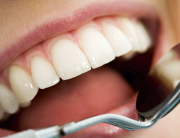Over the last decade, there has been a significant increase in the interest of Cosmetic dentistry. The reason is not quite clear and there may be multiple reasons for the growing interest. It can be attributed to the images seen in the media, which has resulted in more people becoming conscious of the color of their teeth.
Many of the procedures involved focus on improving the appearance of the teeth and gums, and the process includes more than simple teeth whitening. There is also a significant amount of interest veneers and porcelain crowns. However, implanting these devices will require the services of a qualified cosmetic dentist.
Advertisements and programs shown in the media, may often depict before and after photographs, and will they may enhanced by persons with fit bodies, in addition to beautiful teeth which can be critical for an attractive appearance. The results of procedures performed by any cosmetic dentist will depend upon a number of different factors, and patients should first realize that the better results may be obtained from qualified practitioners.
Cosmetic dentistry was originally a specialty that was performed by oral surgeons and periodontists. However the industry, and capability has advanced, and more well-trained general practitioners can perform cosmetic dentistry.
The question most may ask when work is considered is what really cosmetic dentistry is and can it only be done by a cosmetic dentist? The answer is not complex, and much of dentistry is actually cosmetic dentistry. The focus is not only on preservation, but creating the much desired attractive smile. Procedures include bleaching of the teeth, and it may also include restoration on orthodontia, where malpositioned and crooked teeth will be realigned.
Perhaps the most commonly performed procedure is bleaching or whitening of darkened teeth. This procedure was originally performed under the care and guidance of the dentist, but in recent periods the regulatory authorities such as the FDA have approved the sale of kits that allow the procedures to be performed at home. If the procedure is to be done at home, it is highly recommended that only FDA approved products be used, and approved products will normally have the FDA seal of approval on the packaging.
Dentists may also perform the procedures in their offices, using a variety of techniques and materials. In order to choose the most suitable material and procedure, the dentist must first complete a thorough examination, with an outline any of the risks that may sometimes be involved.
Orthondontia is the reposition of teeth into more normal positions, and these procedures can provide multiple benefits. In addition to the cosmetic benefits, there are some functional improvements such as better breathing and more effective chewing of food.
In some dental procedures, the teeth may be replaced by fixed or removable dentures, and the dentist must be aware of enhancements, such as the use of flexible materials in place of metal wires to hold the dentures in place. The newer materials are thinner and much lighter than the predecessors and may be colored as the teeth and will easily snap into place and appear to be invisible.

